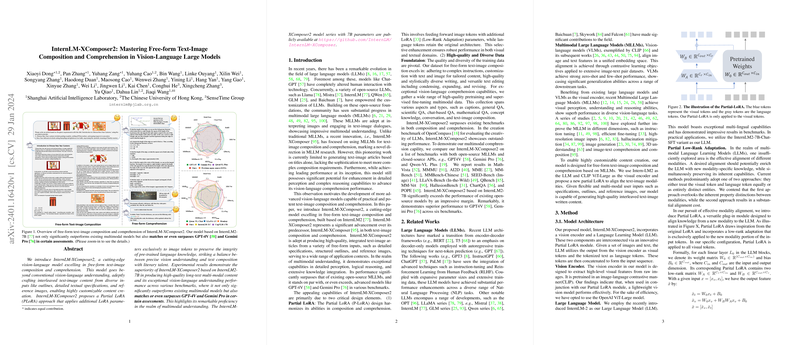Introduction to LLMs
InternLM-XComposer2: Mastering Free-form Text-Image Composition and Comprehension in Vision-LLMs (VLMs) represents a significant advancement in the field of VLMs. It excels in both comprehension of visual elements and text-image composition, offering highly customizable content creation across a wide spectrum of application contexts.
Partial LoRA and Data Foundation
The model's capabilities are amplified through two critical design elements. The first is the Partial LoRA (P-LoRA) which strategically applies additional LoRA parameters to image tokens, harmonizing capability in composition and comprehension. Secondly, high quality and diverse data foundation is essential. The dataset is expertly curated, being rich in complexity and multifaceted, varying from simple instruction adherence to customization of content with a plethora of materials.
Performance Benchmarks and Advances
InternLM-XComposer2’s performance across various benchmarks is noteworthy. It not only significantly surpasses existing open-source MLLMs but also competes with advanced models like GPT-4V and Gemini Pro, particularly excelling in free-form text-image composition demonstrated in the OpenCompass benchmark for evaluating the creativity of LLMs.
The Future of Vision-Language Understanding
The sophistication of InternLM-XComposer2 combined with robust methodologies such as Partial LoRA and a rich data foundation hold promise for the future of multimodal understanding. Its proficiency in nuanced perception, intricate reasoning, and knowledge integration place it at the forefront of VLM advancements, with potential applications ranging from content generation to AI-augmented creative endeavors.
